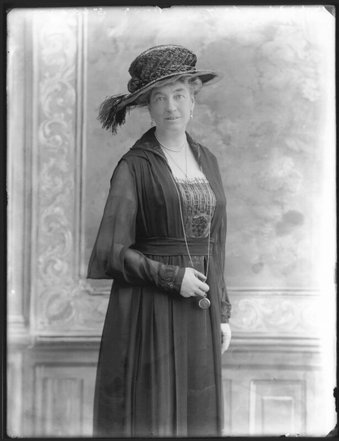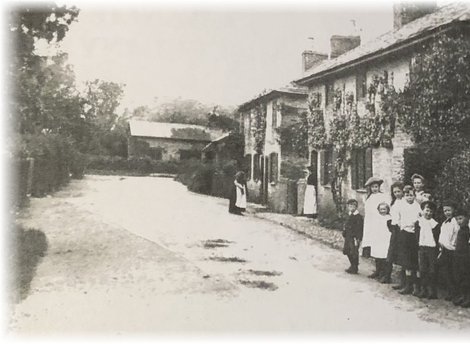The remembrances of Meirion a Wanlip Villager since the 1940's
In 1938 my parents who came from Oadby married and bought a plot of land in Wanlip, part of the Rectory Garden (also known as Rectory Field). The Rectory itself had been demolished many years previously. but the cellars were still there together with the stables and coach house. Our parents built the White House next to The Glebe, so coming from Birstall it was then the first house on the right in the village. The coach house, which backed on to the road, was the one remaining building before White House and it was there for many years until the land was sold.
I was born in the early 40s and was brought up in Wanlip and have, apart from a few international excursions, lived here all my life. I went to Riverside School until I was eight, then Fairfield and Loughborough High School. I then spent a year in Germany – in Krefeld which is twinned with Leicester. My brother went to Riverside and then Kimbolton. He returned to finish his education at Longslade which was brand new and a very modern school.
My mother was a county counsellor and a Governor of Longslade School and Humphrey Perkins, which was in Barrow upon Soar. My father was an architect. He subsequently bought the land next door to us and acquired planning permission for eight plots of half an acre each. With two exceptions he sold these and gifted one each to me and my brother on our 21st birthdays. I built on mine, and this is the house I live in today.
Both my parents were at various times chair of the Parish Meeting. Over the years these meetings were quite often very lively gatherings with most villagers having strong opinions and voicing them. These discussions were usually about planning permissions, roads and demolition. Celebrations were planned and there were lots of those, usually in the Village Hall which was not nearly as grand as it is today.
After school and college, I lived in Germany for a year, returned home and in 1965 went to Malawi for three years. I met my husband there, came home, married and after returning to Malawi spent 2 years in Johannesburg. While we were abroad our house was built and, on our return, we lived in it for 3 years then spent two years in the Seychelles with our children. We have lived in Wanlip ever since.
Lady Augusta Amelia Shirley Palmer (née Sewallis)
© National Portrait Gallery, London
Wanlip Hall, which had been built in the 18th Century was demolished in the early 1930s. I heard stories that Lady Augusta Amelia Palmer when she lived in the Hall used to drive round the village dispensing hot soup and red flannel to their workers at Christmas time. Much of Wanlip land was (and still may be) owned by the Palmer-Tomkinson family. The Cedars has a building called the Palmer -Tomkinson Centre. Charles Palmer-Tomkinson is a friend of the Prince of Wales. He is also the father of the late Tara Palmer Tomkinson and the author Santa Montefiore.
Charles Palmer-Tomkins paternal grandfather James Edward Tomkinson changed the family name to Palmer-Tomkinson in 1933. In 1931 he inherited Wanlip Hall from his maternal uncle Sir Archdale Robert Palmer 4th Baronet on condition that he added the name Palmer to his own. He then married Marion Lindsay Smith, daughter of Lindsay Eric Smith who was a second cousin to Elizabeth the Queen Mother. Lady Augusta Palmer (1849 – 1933) was the wife of Sir Archdale Palmer – daughter of 9th Earl Ferrers. There’s an Archdale Street in Syston.
Wanlip in my childhood
I can remember as far back as the War and my mother pulling the blackout curtains and hearing the planes flying over, possibly to Coventry which was very badly bombed. My mother told me there was a Home Guard platoon during the War which used to march down from Birstall and stop at White House asking if my dad was coming out to play. During the war he designed the camouflage for aerodromes around the country and was often away.
The Government issued orange juice and cod liver oil to keep children healthy. The orange juice was lovely, but no-one liked the cod liver oil, so they added malt to it which was sweet and made it much more palatable. My mother used to store it in a cupboard in our kitchen and dispense it to the villagers when they called.
The only remaining building next door to us was the Rectory Coach House and Stables which stood for many years, boarded up and alongside Rectory Road on the way to Birstall. The cellars on the Rectory field had never been filled in and my brother and I used to take torches down into them and play, although it was a bit dangerous and scary. Our neighbours often reported having found red bricks in their gardens for many years.
My parents lived in the village until they died. Walking into the village on the right after The Glebe was a semi-detached cottage with gardens which went up to the footpath at the side of The Glebe. Florence and Ted Gresswell lived in the one bordering the field. Miss Annie Woods lived in the one nearest the road with her father who was the village shepherd. He used to walk to Birstall bakers and ask for the previous day’s bread. My father gave him his army greatcoat. Annie worked in Syston and walked there and back every day.
The three cottages by the post box used to also be by the telephone box until, in the 60s or early 70s, someone crashed into it and it wasn’t replaced. The Smiths lived in the middle one and Bill and May Gresswell lived at the far end closest to the field. Other tenants were John and Jeanie Valentine who later moved to Birstall. Their daughter ran a dancing class in Birstall for many years.
View of Church Road looking toward Rectory Road (Circa 1900)
The first house on the right in Church Road near the letter box had Percy Hartshorn and family and then there is a house set well back from the road on the right hand side where Madeleine lived with her mother Jessie Kinton.
Next door to them was the Northwood family. Glyn, Owen and their parents.
On the left-hand side of Church Road going towards the church I can remember the council houses being built in the fifties. We village children used to play (quite dangerously) in the scaffolding and brickwork. Beryl Hartshorn lived in the first one, Bill Cooper and his wife Lorna lived in the second and my friend Rosemary Towe lived in the third. Ivy Stevens, who was about five years older than the rest of us lived in the end one nearest the church. She also went to my school.
On the left-hand side of Rectory Road before the bend the first building was the redbrick forge built right on the road opposite Annie’s Cottage. Although I don’t remember it being used as a forge it was easy to see inside the building and we used to go in. Round the corner facing up Church Road was the Schoolhouse. The house had a largish room attached on its left facing Church Road where the classes were held. Although I didn’t know it when it was being used as a school, I and my fellow Wanlip children learned to dance there, taught by Bill Cooper who was a gold medal ballroom dancer. We were very lucky to have that. He was the son of Horace Cooper the farmer. We all went to the dancing classes. There would have been about six or seven of us. Next to the schoolroom was the village pond. After that, round the corner were two farms. Hallam’s and Cooper’s. The other working farm in the village was Home Farm which was next to the church and run at the time by the Shuttlewood family. Their children Brenda and Joan also played with us . Most recently it was run by the Hornbuckles. The farms all had herds of Friesian cattle which were constantly being herded either to or from the milking sheds to the fields.
There were barns in Butchers Lane and farm buildings on the corner, now converted into houses, and we village children used to play in them. When the crops were being harvested by the combine it would go round and round the outside of the field until there was only a little corn standing. At this point all the animals trapped in the middle would make a run for it. They would be shot by the farmers and labourers waiting with their guns. Villagers took picnics and sat to watch.
Of the three working farms Coopers had a large Dutch barn where the whole village gathered for the party for the Queen’s Coronation. The programme for this party is on the last page of the Jubilee Edition Wanlip Village News of June 2012 (photo available). This barn is still on the left as you leave the village to join Fillingate and the A46. The road was very narrow and opposite Rectory Road was The Lodge which was on Fillingate and at the end of the Bridle Path which took you to Rothley. My brother and I had a den in the spinney at the side of the Bridle Path and when my dad wanted to call us in for supper he pressed the Klaxon on his car which you could hear from miles away. He used to tow a caravan across Europe every year in the summer and felt it needed to be an exceptional noise to alert people to an unusual vehicle.
Turning right at Hall Gates on to Fillingate took you over first the river Soar by a narrow stone built humped back bridge, and then over the canal by The Hope and Anchor. This was before Severn Trent moved in.
My father used to drive me to Riverside school in Birstall every morning and in the afternoon I’d walk home, often with Rosemary, Brenda and Joan.
Changing landscape
In 1971 I built on my plot of land,but my brother Max sold his to George and Josie Taylor who had the plot between us. George owned Tailor Maid – a knitware factory on the Melton Road. Since then the house has been enlarged and the garden divided into two more plots for the two houses round the corner on the way to Birstall. Before these plots were developed there was nothing between the Coachhouse in Wanlip and the Birstall village boundary. I can remember Longslade School being built I think in the 60s.
More changes came in the 1960s, when the land from Hallam’s farm and the pond and schoolhouse round to and including the forge and opposite The Glebe, was sold to a builder who built several detached houses. The village has grown considerably since I was a child. Home Farm and its farm buildings down by the church including the milking parlour and piggery have been turned into housing and four new houses have been built there. Also, in the gardens of the Hall four Canadian houses were built at the end of Church Road.
Rectory Road has now become a very busy road, with traffic from Birstall or Syston taking a short cut through Wanlip. It can sometimes take a while now to exit our drive. Whereas I can remember as a child picking fruit and flowers from our garden with my brother and standing by the road trying to sell them. No-one passed for ages and when they did, they didn’t stop. We were gutted !

